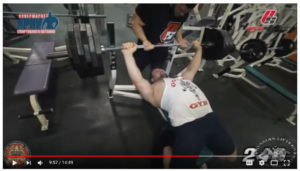There are three basic keys to strength training success. The three keys consist of:
- Learning to do exercises with excellent form.
- Training at an optimal intensity that is hard enough but not too hard.
- Adding weight at the right rate.
If you add weight faster than you should, you will throw yourself off from using the right level of intensity. Once your intensity is too high and too much weight is used, lifting form tends to deteriorate and all three keys to weight training success will be out of wack. Likewise, if you start out using a level of intensity that is too high, it makes it hard to add weight on a consistent basis and it also makes it very difficult to use excellent exercise technique. In other words, all three keys to weight training success tend to affect one another and if one of them gets off course, the others tend to suffer as well.
Precision Point Training
The focus of precision point training is to use precision points in order to determine an optimum level of training intensity. It also requires that you add weight at a rate that allows you to stay within the boundaries of each precision point in order to give you the ability to keep adding weight over the course of long term training. What if you attempt to speed up progress by exceeding the boundaries of precision points, will it speed up progress? Perhaps you will gain quicker, but you will also hit a plateau quicker. In the end, you won’t gain as much.
If staying within the boundaries of precision points plays such an important role for achieving consistent gains, what are the precision points that should be utilized in training? In this article, I will discuss the first precision point which deals with training intensity in terms of how hard to push a set.
The First Precision Point
The first precision point lies between the limit rep and the marker rep as these reps give you a specific stopping point that is designed to allow you to make consistent progress over time. Do not assume as I once did that pushing for max reps to failure is necessary to stimulate muscle growth and strength. Instead, learn how to monitor each set in terms of how long you can maintain a steady even rep pace as this will help you determine an effective stopping point for terminating your set. You can stop a set when you reach the first rep that starts to slow down; this is called the marker rep as it marks the point in the set where you rep speed and/or rep pace begin to decelerate. You can also stop on the rep immediately before the marker rep, which is called the limit rep. The limit rep is the limit of reps that you can perform using a steady even rep pace. When you stop at your limit rep, every rep looks the same; you never reach the point where you can see that your reps are starting to slow down. The following video is a perfect example of two lifters who use this principle.
Having explained all of this, I understand that precision point training will never work for some people because of their training style. There are ways that people execute their reps that undermine precision point training. This isn’t necessarily bad when using other forms of training, but when using precision point training, certain styles of rep performance become a problem that negates the ability to determine when the limit rep and marker rep occur. In the next article, I will discuss these problems and how to correct them if precision point training is being used. Best of Training to you!

